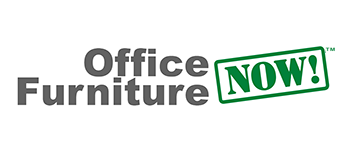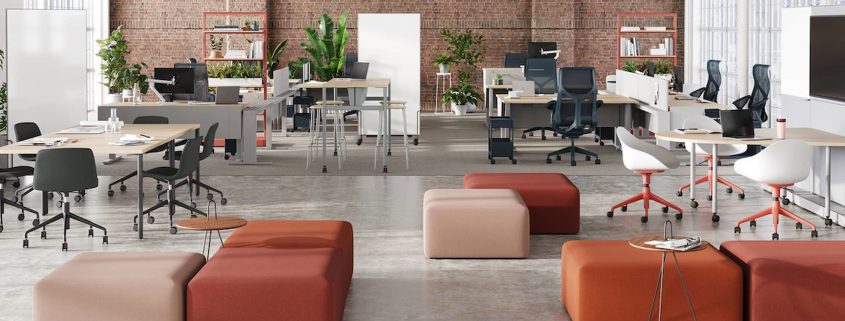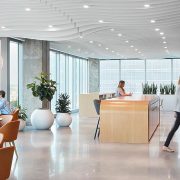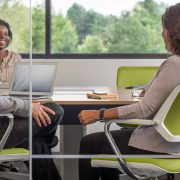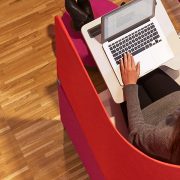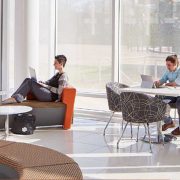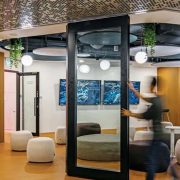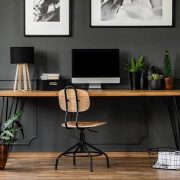Office Neighborhoods Increase Productivity
Office neighborhoods are raising the bar on productivity. As offices around the world adopt hybrid work policies, space planning and design are evolving to support the new realities of hybrid work. The flexibility of hybrid work could leave a once bustling office feeling empty and lacking the energy of in-person collaboration. Creating an environment that encourages diversity within the space planning and design is the best way to increase team collaboration in the future of flexible work.
Resistance to the return to work doesn’t seem to be about flexible work itself. Hybrid work was successfully implemented in many industries far ahead of the lockdown mandate. It makes commuters happier and creates a more vested interest in business goals. Flexible work has been embraced by 71% of global leaders giving people the option to work two-to-three days from home or other locations. The resistance seems to have more to do with the lack of forward-thinking design and the amenities your office has to offer.
Has Anything Really Changed?
As offices around the world adopt hybrid work policies for hiring incentives, many haven’t changed their office design to support this new way of working within a flexible team collaboration structure:
- Flex workers will be coming and going at different times
Does your office feel empty and less vibrant with this change? - Open collaborative video calls can become disruptive loudspeakers
Are there privacy areas in place to accommodate collaboration with remote teammates? - Updated space planning is essential to designate more choices on where to work
Has your office design been updated to support flexible work areas? - Increase digital conferencing and AI communication capabilities with LED walls
When was the last time you updated your remote communication options?
A New Inspiration
Rethinking the future of office design based on flexible work and the need to fit more people into less space is changing the dynamic of how we work. To counteract the impact of this change, workplace designers are drawing inspiration from the vibrant communities in which we live by creating spaces less focused on efficiency and more focused on relaxed human connection. Working from home had to be modified to create stability, productivity, and collaboration. As teams worked tucked in among the bustling sidewalks, shops, parks, cafes, and the public spaces of neighborhood life, perceptions changed. People learned to embrace the need for diverse neighborhoods in which to thrive.
Workspaces are now being tasked with earning the commute by meeting a new set of needs through vibrant color and design changes to give both teams and individuals the best work experience possible while completing their tasks. A forward-focused office design should:
- Support hybrid work
- Establish meaningful connections
- Create a sense of belonging
- Promote well-being at work
- Adapt a fresh design strategy for collaboration
The Neighborhood Concept
As part of the lure back to work, creating diverse neighborhoods within the workplace enables employers to create a more tangible way to communicate retooled values and shift the workplace culture to create the same energy and connection people feel sitting in a sidewalk cafe or the same level of solitude they experience in the privacy of their own home.
Neighborhoods at work provide a home base for individuals, teams, departments, or project teams. They imbibe a variety of interconnected spaces that support different types of work, a mixture of uses, and the natural flow from one to another:
- Individual spaces can be assigned to one person or shared amongst the team
- Collaboration spaces provide for in-person and virtual interactions that support the different ways people connect
- Privacy spaces for individual heads-down work or finding solitude and rejuvenation
- Ample gathering areas to socialize and learn with teammates in integrated breakout spaces
Strive to create a destination workplace where people feel comfortable and connected to their teammates and the tools they need to do their job efficiently. For an office neighborhood to truly work for your people it has to be based on a fundamentally new employee experience. A framework that includes:
- Equity: Design a more inclusive experience for all participants, eliminating the gap between co-located and remote employees.
- Engagement: Design settings for a range of experiences that help people participate fully, focus deeply, and stay in flow longer.
- Ease: Design a variety of intuitive virtual and physical experiences that are easy to navigate and control.
Designing Office Neighborhoods
Just like the residential neighborhood you had while working from home, every office neighborhood should have its own distinctive character within the hybrid design model. Here are four fundamental design principles to guide your workplace neighborhood design:
Me + We: Just as city neighborhoods have homes and shared spaces, the new neighborhood at work supports both individual and teamwork. The amount of space for each will vary, but they should support people doing different types of work throughout the day. And allow for quick shifts that give people more options and autonomy over their day.
Fixed-to-Fluid: Great neighborhoods evolve when new people move in or a new store opens. At work, change is constant, sometimes in small ways as teams need to add more people, or in significant ways when they need more collaboration spaces. A hybrid neighborhood should be modular and flexible — embracing changes as they arise throughout the workday.
Open + Enclosed: Privacy solutions in the office have become even more important. People who struggled with sound in open office plans before, after working from home, will be even more sensitive to the need for control over their privacy. Great neighborhoods blend private and public spaces, making the community diverse and dynamic.
Braiding Digital + Physical: Urban planners are creating smart cities and hybrid office neighborhoods need to do the same. Video meetings are a new norm in the office and everyone needs to see and be seen, hear and be heard. Your technology needs to be easy to use, but having a space that’s the right size with the right features is key to making it work.
We know these changes can be overwhelming if your large office has become less occupied. Our team is equipped to help you reenvision the space for a successful hybrid office design and reconfiguration that will provide the modern, flexible workplace your team has been craving. We can help you create an experiential environment where your team will flourish.
Photo from HermanMiller. Content adapted from Steelcase research.
 OFFICE DESIGN is embracing hybrid work environments that promote flexible work options. Our team is equipped with a new scope of knowledge to help you adapt your existing workplace effectively to the needs of this new way of working and what it means for your team. Contact us at 512-448-3769 or experts@officefurniturenow.com
OFFICE DESIGN is embracing hybrid work environments that promote flexible work options. Our team is equipped with a new scope of knowledge to help you adapt your existing workplace effectively to the needs of this new way of working and what it means for your team. Contact us at 512-448-3769 or experts@officefurniturenow.com
